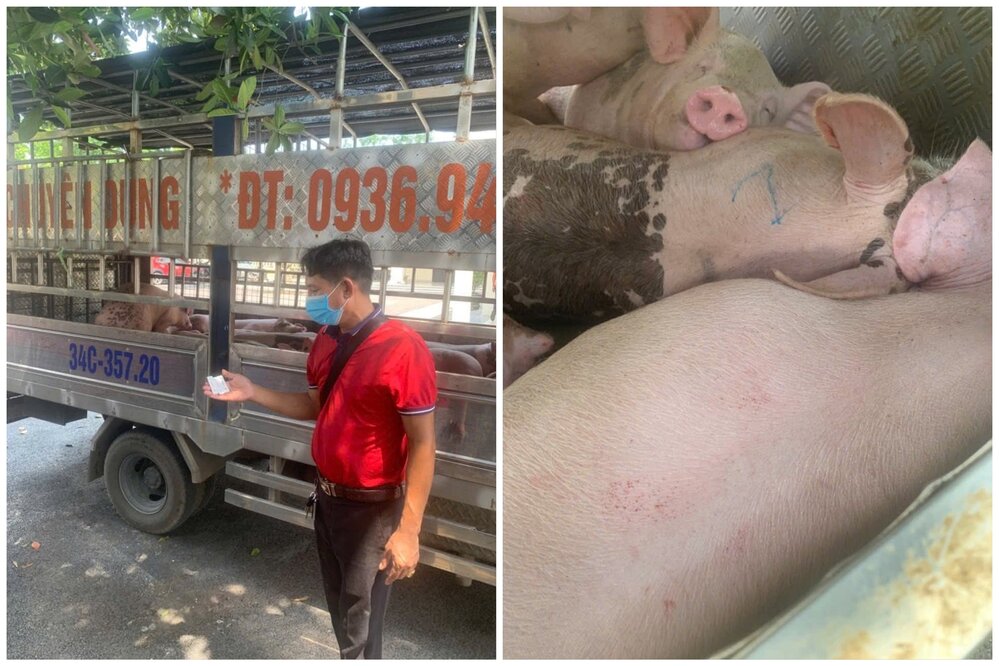Phu Tho has had 29 communes and wards experience African cholera
According to the report of the Department of Agriculture and Environment of Phu Tho province, as of July 16, there were 27 communes and wards in the province with epidemics that had not exceeded 21 days.
In the old Phu Tho province, there are still 8 communes, including: Tram Than, Hung Viet, Hy Cuong, Hien Luong, Van Lang, Phu Khe, Lien Minh, Dan Thuong (increased by 2 communes: Lien Minh, Dan Thuong).
The total number of households with sick pigs is 16; 199 sick and dead pigs have been destroyed; the total weight of destroyed pigs is 8,307kg.
In the old Hoa Binh province, there are 18 communes, including: Yen Thuy, Mai Chau, Pa Co, Kim Boi, Hop Kim, Cao Duong, Thung Nai, Tien Phong, Lac Son, Muong Hoa, Bao La, Mai Ha, nat Son, Lac Luong, Cao Phong, Nhan Nghia, Thuong Coc, Yen Tri (increasing by 6 communes are nat Son, Lac Luong, Cao Phong, Nhan Nghia, Thuong Coc, Yen Tri).
The total number of households with sick pigs is 148 households; 1,056 sick and dead pigs have been destroyed; the total weight of destroyed pigs is 65,625kg.
In the old Vinh Phuc province, there was 1 ward, Vinh Phuc ward (increased by 1 ward), with African swine fever; The total number of households with sick pigs was 1 household; 21 sick and dead pigs were destroyed; the total weight of destruction was 2,433kg.
The report also stated that up to now, African swine fever has occurred in 29 communes and wards including: Yen Thuy, Cao Son, Mai Chau, Pa Co, Kim Boi, Hop Kim, Cao Duong, Thung Nai, Tien Phong, Lac Son, Xuan Dai, Tram Than, Hung Viet, Hy Cuong, Hien Luong, Van Lang, Phu Khe, Muong Hoa, Bao La, Mai Ha, Lien Minh, Dan Thuong, Tat Son, Lac Luong, Cao Phong, Nhan Nghia, Thuong Coc, Yen Tri, Vinh Phuc ward.
The total number of households with sick pigs is 199; 1,349 sick and dead pigs have been destroyed; the total weight of destroyed pigs is over 78 tons.
The epidemic has been announced in 11 communes including: Yen Thuy, Yen Tri, Mai Chau, Pa Co, Kim Boi, Hop Kim, Tien Phong, Thung Nai, Lac Son, nat Son, Lac Luong.

Will strictly control pig farming, trading, transportation, and slaughter
Regarding the results of implementing epidemic prevention solutions, the Department of Animal Husbandry, Veterinary and Fisheries has advised the Provincial People's Committee and the Department of Agriculture and Environment to synchronously issue documents directing the implementation of epidemic prevention, requesting communes to register the need for disinfectants to control the epidemic.
Up to now, 168 liters of disinfectants have been provided to the communes to prevent the epidemic, of which Tram Than commune has received 60 liters of disinfectants sprayed on 76 livestock households with a total sprayed area of 38,000 m2 (the remaining communes have not reported data).
On July 16, 2025, the Department of Animal Husbandry, Veterinary and Fisheries requested the Department of Agriculture and Environment to issue 1,033 liters of disinfectants to Hung Viet, Hy Cuong, Phu Khe, and Hien Luong communes.
Along with that, the Department has coordinated with functional forces to handle 6 cases of violations of regulations on transportation and slaughter of pigs in violation of regulations (cases of transporting pigs in Hai Luu commune and dumping dead pigs into the environment in An Binh commune waiting for testing results); destroyed 231 pigs, with a total weight of nearly 20 tons.
According to the assessment, the epidemic situation in the coming time tends to continue to arise and spread in the area, especially in small-scale livestock households, not applying biosafety livestock measures.
Regarding solutions, in the coming time, the Department of Agriculture and Environment will direct the People's Committees of communes and wards to direct functional forces to coordinate with relevant departments to strictly control pig farming, trading, transportation, and slaughter; strictly handle violations according to regulations.
At the same time, strengthen supervision and early detection of epidemics to promptly handle them, prevent the epidemic from arising and spreading; step up propaganda and guidance for livestock farmers; proactively arrange a budget to implement disease prevention, ensuring timeliness and effectiveness.











